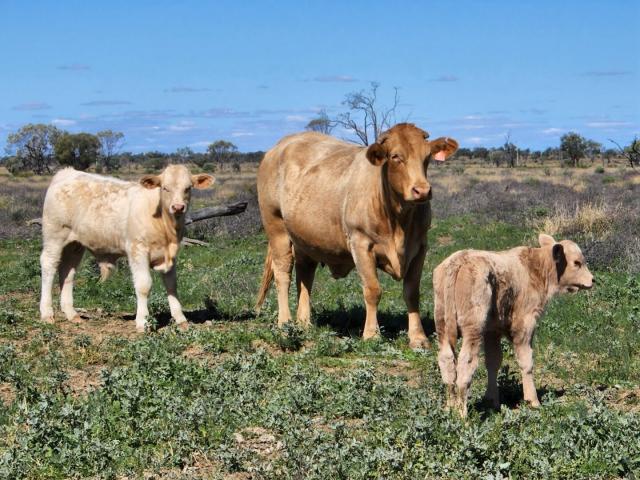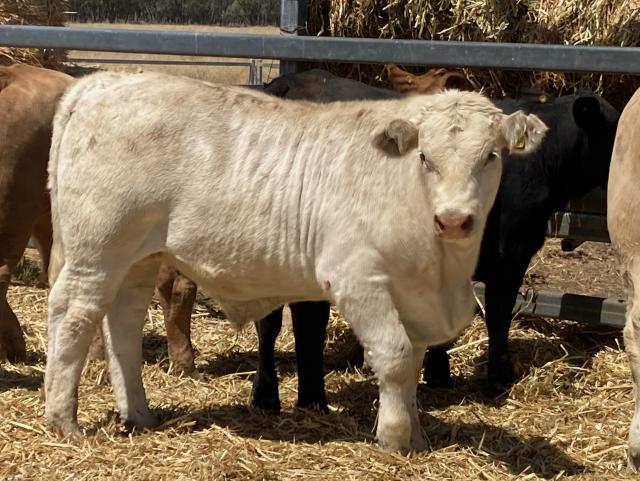The psychology of animals, their happiness and their education is what interests Myriam Daley most about the commercial crossbreeding business she runs with husband Simon in southern and central Queensland.
“Our livestock are our livelihood,” Myriam said.
“We are very passionate about what we do, we put a lot of time into our cattle and we educate them through the weaning process.
“A young animal’s education is imperative, they remember that forever. We care for the animals to our utmost ability, so animal welfare is part and parcel.
“If you have the time to treat them with respect and gain their trust without fear, you then have an easy animal to feed, handle safely and to move on to its next home.
“It’s a win-win for all concerned.”
Each year, the Daleys source 18-month-old paddock Charolais sires for temperament, fertility and frame over their cowherd from the Dalveen-based Palgrove stud in the Southern Downs region.
Short gestation, high growth rate and structural soundness are crucial, while larger eye muscle area and positive rib and rump fat estimated breeding values (EBVs) are also sought.
“Temperament is very important to us,” Myriam said. “We like what Palgrove stud has to offer, their style of bull.“
When drought decimated the Daley’s Longreach property in 2013, they bought the 3300-hectare Injune property “Waterview” as a base to allow the central Queensland grasses to recover.
Another property owned near Wandoan is used for finishing and one close to Blackall for breeding, allowing the Daleys to calve in the west and finish in the east closer to the feedlot market, which reduces their costs.
“With a good season returning to our Longreach property, ‘Waterview’ will change direction and host an Angus breeding business to help capture the price premium in the straight black feeder market,” Myriam said.
“And, as we nurse the Longreach property back to health, it will gradually hold Charolais-cross cows, the first significant stocking numbers there for 10 years.
“It looks magnificent out there at the moment.”
The Daleys wean their calves at 200 kilograms-plus.
Steers are trucked to Wandoan for growing and finishing before being sold to domestic feedlots.
Heifers are offloaded online through AuctionsPlus, depending on the market, while retainer heifers are joined on the Blackall property to low birthweight Angus bulls.
The Daleys turn their progeny off at milk-tooth between 430kg and 500kg and the heifers at milk-tooth between 320kg and 400kg. All are HGP free.
When Queensland Farmer Today spoke to Simon and Myriam they had just sold a run of heifers on AuctionsPlus.
Simon said although prices were back “a bit” he remained happy with the market.
“We’re still getting good money,” he said. “But it is amazing how quickly the market can change.”
The Daleys join and calve year-round to ensure continual cash flow from their progeny.
Heifers are joined from 18 months – or 320kg-plus – depending on the season.
Cows are processed, when required, to maintain breeder condition score and calves are weaned from 200kg-plus to maintain growth.
“We have found our calves are not having too many setbacks after weaning if we wean from 200kg-plus,” Simon said.
“The calves with plenty of frame and bone need to have that weight to continue on a forward plane.
“If we feel the season is not favourable to the cow we adjust the weaning weights.
“Every two to three months we would sell feeder steers direct to feedlots.”
The Daley’s calving rate is about 85 per cent to 90pc.
They “preg test” heavily using manual and ultrasound technology and individually document each animal through an NLIS management tag.
These cattle have lifetime data traceability.
To reduce stress levels from weaning, the Daleys ensure nutrition is top shelf.
Weaners receive the best quality oaten hay, clean water and weaner pellets and they are vaccinated and treated straight off their mothers for worms, lice and clostridial diseases.
“We ensure their health status is very good,” Simon said.
“We treat the animals so they have optimal wellbeing throughout their lives. We just want to do the best we can for them.”







